Milwaukee 9071-20 User manual
- Category
- Power impact wrenches
- Type
- User manual

OPERATOR'S MANUAL
MANUEL de L'UTILISATEUR
MANUAL del OPERADOR
TO REDUCE THE RISK OF INJURY, USER MUST READ OPERATOR'S MANUAL.
AFIN DE RÉDUIRE LE RISQUE DE BLESSURES, L'UTILISATEUR DOIT LIRE LE MANUEL DE L'UTILISATEUR.
PARA REDUCIR EL RIESGO DE LESIONES, EL USUARIO DEBE LEER EL MANUAL DEL OPERADOR.
IMPACT WRENCH
CLÉ À PERCUSSION
LLAVE DE IMPACTO
Cat. No.
No de cat.
9070-20
9071-20
9072-20
9072-22
9075-20
9092-20
9096-20

page 2
GENERAL SAFETY RULES — FOR ALL POWER TOOLS
WORK AREA SAFETY
ELECTRICAL SAFETY
PERSONAL SAFETY
POWER TOOL USE AND CARE
SERVICE
4. Power tool plugs must match the outlet. Never modify the plug in
any way. Do not use any adapter plugs with earthed (grounded)
power tools. Unmodifi ed plugs and matching outlets will reduce risk
of electric shock.
5. Avoid body contact with earthed or grounded surfaces such as
pipes, radiators, ranges and refrigerators. There is an increased risk
of electric shock if your body is earthed or grounded.
6. Do not expose power tools to rain or wet conditions. Water entering
a power tool will increase the risk of electric shock.
7. Do not abuse the cord. Never use the cord for carrying, pulling, or
unplugging the power tool. Keep cord away from heat, oil, sharp
edges, or moving parts. Damaged or entangled cords increase the
risk of electric shock.
8. When operating a power tool outdoors, use an extension cord suit-
able for outdoor use. Use of a cord suitable for outdoor use reduces
the risk of electric shock.
WARNING
READ ALL INSTRUCTIONS
Failure to follow all instructions listed below may result in electric shock, fi re and/or serious injury. The term "power tool" in all of the
warnings listed below refers to your mains-operated (corded) power tool or battery-opearted (cordless) power tool.
SAVE THESE INSTRUCTIONS
16. Do not force the power tool. Use the correct power tool for your
application. The correct power tool will do the job better and safer at
the rate for which it was designed.
17. Do not use the power tool if the switch does not turn it on and off.
Any power tool that cannot be controlled with the switch is dangerous
and must be repaired.
18. Disconnect the plug from the power source and/or the battery pack
from the power tool before making any adjustments, changing ac-
cessories, or storing power tools. Such preventive safety measures
reduce the risk of starting the tool accidentally.
19. Store idle power tools out of the reach of children and do not al-
low persons unfamiliar with the power tools or these instructions
to operate power tools. Power tools are dangerous in the hands of
untrained users.
20. Maintain power tools. Check for misalignment or binding of moving
parts, breakage of parts and any other condition that may affect the
power tool's operation. If damaged, have the power tool repaired
before use. Many accidents are caused by poorly maintained power
tools.
21. Keep cutting tools sharp and clean. Properly maintained cutting
tools with sharp cutting edges are less likely to bind and are easier to
control.
22. Use the power tool, accessories and tool bits etc., in accordance
with these instructions and in the manner intended for the particu-
lar type of power tool, taking into account the working conditions
and the work to be performed. Use of the power tool for operations
different from those intended could result in a hazardous situation.
23. Have your power tool serviced by a qualifi ed repair person using
only identical replacement parts. This will ensure that the safety of
the power tool is maintained.
1. Keep work area clean and well lit. Cluttered or dark areas invite ac-
cidents.
2. Do not operate power tools in explosive atmospheres, such as
in the presence of fl ammable liquids, gases, or dust. Power tools
create sparks which may ignite the dust or fumes.
3. Keep children and bystanders away while operating a power tool.
Distractions can cause you to lose control.
9. Stay alert, watch what you are doing and use common sense when
operating a power tool. Do not use a power tool while you are tired
or under the infl uence of drugs, alcohol or medication. A moment
of inattention while operating power tools may result in serious personal
injury.
10. Use safety equipment. Always wear eye protection. Safety equip-
ment such as dust mask, non-skid safety shoes, hard hat, or hearing
protection used for appropriate conditions will reduce personal inju-
ries.
11. Avoid accidental starting. Ensure the switch is in the off-position
before plugging in. Carrying tools with your fi nger on the switch or
plugging in power tools that have the switch on invites accidents.
12. Remove any adjusting key or wrench before turning the power
tool on. A wrench or a key left attached to a rotating part of the power
tool may result in personal injury.
13. Do not overreach. Keep proper footing and balance at all times. This
enables better control of the power tool in unexpected situations.
14. Dress properly. Do not wear loose clothing or jewellery. Keep your
hair, clothing and gloves away from moving parts. Loose clothes,
jewellery, or long hair can be caught in moving parts.
15. If devices are provided for the connection of dust extraction and
collection facilities, ensure these are connected and properly used.
Use of these devices can reduce dust-related hazards.
1. Hold power tools by insulated gripping surfaces when performing
an operation where the cutting tool may contact hidden wiring or
its own cord. Contact with a "live" wire will make exposed metal parts
of the tool "live" and shock the operator.
2. Maintain labels and nameplates. These carry important information.
If unreadable or missing, contact a MILWAUKEE service facility for a
free replacement.
3. WARNING! Some dust created by power sanding, sawing, grinding,
drilling, and other construction activities contains chemicals known to
cause cancer, birth defects or other reproductive harm. Some examples
of these chemicals are:
• lead from lead-based paint
• crystalline silica from bricks and cement and other masonry products,
and
• arsenic and chromium from chemically-treated lumber.
Your risk from these exposures varies, depending on how often you do
this type of work. To reduce your exposure to these chemicals: work in
a well ventilated area, and work with approved safety equipment, such
as those dust masks that are specially designed to fi lter out microscopic
particles.
SPECIFIC SAFETY RULES

page 3
FUNCTIONAL DESCRIPTION
Double Insulated
Symbology
Volts Alternating Current/
Direct Current
Impacts per Minute
Under Load (IPM)
Amperes
Canadian
Standards Association
Underwriters
Laboratories, Inc.
Volts Alternating Current
Mexican Approvals
Marking
1. Drive shank
2. Forward/reverse switch
(Cat. No. 9072-20, 9072-22, 9092-20, 9096-20)
3. Trigger
(Cat. No. 9072-20, 9072-22, 9092-20, 9096-20)
Rocker switch (Cat. No. 9070-20, 9071-20, 9075-20)
4. Speed control dial
(Cat. No. 9072-20, 9072-22, 9092-20, 9096-20)
5. Quik-Lok® cord (Cat. No. 9072-20, 9072-22, 9092-20, 9096-20)
6. Quick change chuck (Cat. No. 9092-20, 9096-20)
7. Tool hanger (Cat. No. 9092-20, 9096-20)
8. Tool hanger ring (Cat. No. 9092-20, 9096-20)
1
4
3
2
Cat. No. 9072-20
9072-22
5
Impacts Per
Minute
2600
2600
1000-2600
1000-2600
2500
1000-2600
1000-2600
Cat.
No.
9070-20
9071-20
9072-20
9072-22
9075-20
9092-20
9096-20
Average Torque
Output
300 ft-lbs.
300 ft-lbs.
100-300
ft-lbs.
100-300
ft-lbs.
380 ft-lbs.
100-315
ft-lbs.
100-315
ft-lbs.
Volts
120 AC/DC
120 AC/DC
120 AC Only
120 AC Only
120 AC/DC
120 AC Only
120 AC Only
Specifi cations
A
7
7
7
7
7
7
7
Drive
Shank
1/2"
1/2"
1/2"
1/2"
3/4"
7/16" Hex
5/8" Hex
No Load
RPM
1800
1800
600-1800
600-1800
1750
600-1800
600-1800
6
Cat. No. 9092-20
7
8
3
Cat. No. 9075-20
Cat. No.
9070-20
9072-20
9072-22
9092-20
9096-20
Quick Change Auger Bits
1-1/2"
1-1/2"
1-1/2"
1-1/2"
1-1/2"
Quick Change Chuck Capacities*
Selfeed Bits
2-9/16"
2-9/16"
2-9/16"
2-9/16"
2-9/16"
* Only for use with the 7/16" or 5/8" Hex Quick Change chuck, stan-
dard equiptment on the 9092-20 (7/16") and 9096-20 (5/8"), optional
accessory (Cat. No. 48-66-0061) on other models.

page 4
Grounded tools require a three wire extension cord. Double insulated tools
can use either a two or three wire extension cord. As the distance from the
supply outlet increases, you must use a heavier gauge extension cord. Us-
ing extension cords with inadequately sized wire causes a serious drop in
voltage, resulting in loss of power and possible tool damage. Refer to the
table shown to determine the required minimum wire size.
The smaller the gauge number of the wire, the greater the capacity of the
cord. For example, a 14 gauge cord can carry a higher current than a 16
gauge cord. When using more than one extension cord to make up the total
length, be sure each cord contains at least the minimum wire size required. If
you are using one extension cord for more than one tool, add the nameplate
amperes and use the sum to determine the required minimum wire size.
Guidelines for Using Extension Cords
• If you are using an extension cord outdoors, be sure it is marked with
the suffi x “W-A” (“W” in Canada) to indicate that it is acceptable for
outdoor use.
• Be sure your extension cord is properly wired and in good electrical
condition. Always replace a damaged extension cord or have it repaired
by a qualifi ed person before using it.
• Protect your extension cords from sharp objects, excessive heat and
damp or wet areas.
GROUNDING EXTENSION CORDS
Grounded Tools:
Tools with Three Prong Plugs
Tools marked “Grounding Required”
have a three wire cord and three
prong grounding plug. The plug must
be connected to a properly grounded
outlet (See Figure A). If the tool should
electrically malfunction or break down,
grounding provides a low resistance
path to carry electricity away from
the user, reducing the risk of electric
shock.
Improperly connecting the grounding wire can result in the risk of
electric shock. Check with a qualifi ed electrician if you are in doubt
as to whether the outlet is properly grounded. Do not modify the
plug provided with the tool. Never remove the grounding prong
from the plug. Do not use the tool if the cord or plug is damaged. If
damaged, have it repaired by a MILWAUKEE service facility before
use. If the plug will not fi t the outlet, have a proper outlet installed
by a qualifi ed electrician.
Nameplate
Amperes
0 - 5
5.1 - 8
8.1 - 12
12.1 - 15
15.1 - 20
Extension Cord Length
25'
16
16
14
12
10
75'
16
14
12
10
10
100'
14
12
10
10
--
150'
12
10
--
--
--
200'
12
--
--
--
--
Recommended Minimum Wire Gauge
for Extension Cords*
* Based on limiting the line voltage drop to fi ve
volts at 150% of the rated amperes.
50'
16
16
14
12
10
READ AND SAVE ALL INSTRUCTIONS
FOR FUTURE USE.
The grounding prong in the plug is connected through the green wire inside
the cord to the grounding system in the tool. The green wire in the cord must
be the only wire connected to the tool's grounding system and must never
be attached to an electrically “live” terminal.
Your tool must be plugged into an appropriate outlet, properly installed and
grounded in accordance with all codes and ordinances. The plug and outlet
should look like those in Figure A.
Double Insulated Tools:
Tools with Two Prong Plugs
Tools marked “Double Insulated” do
not require grounding. They have a
special double insulation system which
satisfies OSHA requirements and
complies with the applicable standards
of Underwriters Laboratories, Inc., the
Canadian Standard Association and
the National Electrical Code. Double
Insulated tools may be used in either
of the 120 volt outlets shown in Figures
B and C.
WARNING
Fig. A
Fig. B
Fig. C

page 5
WARNING
TOOL ASSEMBLY
To reduce the risk of injury, always unplug tool before attaching
or removing accessories or making adjustments. Use only specifi -
cally recommended accessories. Others may be hazardous.
Removing and Replacing Quik-Lok
®
Cords (Fig. 1) Cat. No. 9072-20,
9072-22, 9092-20 and 9096-20
MILWAUKEE's exclusive Quik-Lok
®
Cords provide instant fi eld replacement
or substitution.
Fig. 1
1. To remove the Quik-Lok
®
Cord, turn the cord nut 1/4 turn to the left and
pull it out.
2. To replace the Quik-Lok
®
Cord, align the connector keyways and push
the connector in as far as it will go. Turn the cord nut 1/4 turn to the
right to lock.
Attaching and Removing the Tool Hanger (Fig. 2) Cat. No. 9092-20,
9096-20, or as an accessory
Attaching and Removing Accessories (Fig. 3) Cat. No. 9071-20, 9075-20
This impact wrench is intended only for use with sockets designed for impact
wrenches and that have a 1/2" square drive (3/4" square drive for Cat. No.
9075-20). Other sockets could shatter or break, causing injury.
1. To attach a socket or other accessory, push the accessory onto the
drive shank until it snaps into place.
2. To remove the accessory, pull it off the drive shank.
Attaching and Removing Accessories (Fig. 4) Cat. No. 9070-20, 9072-
20, 9072-22
These impact wrenches are intended only for use with sockets designed
for impact wrenches and that have a 1/2" square drive. Other sockets could
shatter or break, causing injury.
1. To attach a socket or other accessory, align the hole in the accessory
with the detent pin on the drive shank. Hold the detent pin in while
pushing the socket onto the drive shank. The detent pin will snap into
place in the hole to secure the socket.
2. To remove the accessory, insert a nail or other thin object into the hole
in the accessory and press the detent pin in. Pull the accessory off the
drive shank.
Fig. 3
Drive shank
Fig. 4
Drive shank
Detent pin
1. To attach, remove the two top gear case screws (Fig. 2).
2. Place the ring through the tool hanger.
3. Position the tool hanger on the tool over the two gear case screw
holes.
4. Replace the two gear case screws. Hand tighten the screws.
5. To remove, reverse the procedure.
Fig. 2
Gear case
screws
Tool
hanger
Ring
Attaching and Removing Accessories (Fig. 5) Cat. No. 9092-20, 9096-20,
or other Impact Wrenches using the Quick Change 1/2" Square Drive
to 7/16" Hex Adapter
Cat. No. 9092-20 and accessory Cat. No. 48-66-0061 are intended for use
with drill bits and adapters with a 7/16" Hex Quick Change shank. Cat. No.
9096-20 is intended for use with drill bits and adapters with a 5/8" Hex Quick
Change shank. Both Hex Quick Change shanks have a ball-retainer groove.
They are not intended for use with Hex Shank Bit Extensions.
1. To attach an accessory, pull the chuck collar forward and insert the ac-
cessory shank. Release the collar. It may be necessary to pull the bit
out slightly to engage the holding mechanism.
2. To remove the accessory, pull the chuck collar forward and remove the
accessory. Release the collar.
Fig. 5
Open (Release)
Closed (Locked)
Ball-retainer
groove
WARNING
Use only sockets and other accessories specifi cally designed for
use on impact wrenches and drivers. Other sockets and acces-
sories might shatter or break causing injury.

page 6
OPERATION
WARNING
To reduce the risk of injury, wear safety goggles or glasses with
side shields. Unplug the tool before changing accessories or
making adjustments.
Using the Forward/Reverse Switch (Fig. 6) Cat. No. 9072-20, 9072-22,
9092-20, and 9096-20
This impact wrench is equipped with a forward/reverse switch that may be
set to forward or reverse rotation.
1. For forward (clockwise) rotation, push the forward/reverse switch in
the direction shown. Check the direction of rotation before use.
2. For reverse (counterclockwise) rotation, push the forward/reverse
switch in the direction shown. Check the direction of rotation before
use.
Fig. 6
Forward
Reverse
Forward/ Reverse
Switch
WARNING
To reduce the risk of injury, keep hands and cord away from the
bit and all moving parts.
WARNING
To reduce the risk of explosion, electric shock and property
damage, always check the work area for hidden pipes and wires
before drilling.
This impact wrench may be operated at any speed from 0 to full speed.
The speed will remain variable up to the chosen speed dial setting by use
of the trigger. The speed dial turns clockwise to increase the speed or
counterclockwise to decrease the speed (Fig. 8).
1. Select a speed on the speed dial.
2. To start the tool, pull the trigger.
3. To vary the driving speed, increase or decrease pressure on the trigger.
The further the trigger is pulled, the greater the speed.
4. To stop the tool, release the trigger.
Starting and Stopping the Tool (Fig. 9)
Cat No. 9070-20, 9071-20, 9075-20
These impact wrenches are equipped with a rocker switch that offers both
forward and reverse rotation.
Rocker
switch
Fig. 9
Fig. 7
Starting, Stopping and Controlling Speed (Fig. 8) Cat. No. 9072-20,
9072-22, 9092-20, and 9096-20
Fig. 8
Trigger
Speed dial
To increase
the speed
1. For forward (clockwise) rotation, pull the lower portion of the switch.
2. For reverse (counterclockwise) rotation, pull the upper portion of the
switch.
NOTE: To prevent damage to the motor and internal mechanism, allow the
motor to stop completely before switching from forward to reverse or from
reverse to forward.
Impacting Techniques
The longer a bolt, screw, or nut is impacted, the tighter it will become. To
help prevent damaging the fasteners or workpieces, avoid excessive impact-
ing. Be particularly careful when impacting smaller fasteners because they
require less impacting to reach optimum torque.
Practice with various fasteners, noting the length of time required to reach
the desired torque. Check the tightness with a hand-torque wrench. If the
fasteners are too tight, reduce the impacting time. If they are not tight enough,
increase the impacting time.
Impacting for two seconds is generally suffi cient for a 3/8" bolt and one
second for a 5/16" bolt. However, oil, dirt, rust or other matter on the threads
or under the head of the fastener affects the degree of tightness.
The torque required to loosen a fastener averages 75% to 80% of the tighten-
ing torque, depending on the condition of the contacting surfaces. However,
if rust or corrosion causes seizing, more torque may be required.
On light gasket jobs, run each fastener down to a relatively light torque and
use a hand torque wrench for fi nal tightening.
WARNING
To reduce the risk of injury, only grasp tool by handle and red
insulated surfaces (Fig. 7). Do not hold gray gear case when
impacting or drilling.

page 7
Maintaining Tools
Keep your tool in good repair by adopting a regular maintenance pro-
gram. Before use, examine the general condition of your tool. Inspect
guards, switches, tool cord set and extension cord for damage. Check
for loose screws, misalignment, binding of moving parts, improper
mounting, broken parts and any other condition that may affect its safe
operation. If abnormal noise or vibration occurs, turn the tool off im-
mediately and have the problem corrected before further use. Do not
use a damaged tool. Tag damaged tools “DO NOT USE” until repaired
(see “Repairs”).
Under normal conditions, relubrication is not necessary until the motor
brushes need to be replaced. After six months to one year, depending on
use, return your tool to the nearest MILWAUKEE service facility for the
following:
• Lubrication
• Brush inspection and replacement
• Mechanical inspection and cleaning (gears, spindles, bearings,
housing, etc.)
• Electrical inspection (switch, cord, armature, etc.)
• Testing to assure proper mechanical and electrical operation
MAINTENANCE
Cleaning
Clean dust and debris from vents. Keep the tool handles clean, dry and
free of oil or grease. Use only mild soap and a damp cloth to clean your
tool since certain cleaning agents and solvents are harmful to plastics and
other insulated parts. Some of these include: gasoline, turpentine, lacquer
thinner, paint thinner, chlorinated cleaning solvents, ammonia and house-
hold detergents containing ammonia. Never use fl ammable or combustible
solvents around tools.
Repairs
If your tool is damaged, return the entire tool to the nearest service center.
WARNING
To reduce the risk of injury, always unplug your tool before per-
forming any maintenance. Never disassemble the tool or try to do
any rewiring on the tool's electrical system. Contact a MILWAUKEE
service facility for ALL repairs.
WARNING
To reduce the risk of injury, electric shock and damage to the tool,
never immerse your tool in liquid or allow a liquid to fl ow inside
the tool.
ACCESSORIES
To reduce the risk of injury, always unplug the tool before attach-
ing or removing accessories. Use only specifi cally recommended
accessories. Others may be hazardous.
WARNING
FIVE YEAR TOOL LIMITED WARRANTY
For a complete listing of accessories refer to your MILWAUKEE Elec-
tric Tool catalog or go on-line to www.milwaukeetool.com. To obtain a
catalog, contact your local distributor or a service center.
Every MILWAUKEE tool is tested before leaving the factory and is war-
ranted to be free from defects in material and workmanship. MILWAUKEE
will repair or replace (at MILWAUKEE’s discretion), without charge, any
tool (including battery chargers) which examination proves to be defective
in material or workmanship from fi ve (5) years after the date of purchase.
Return the tool and a copy of the purchase receipt or other proof of pur-
chase to a MILWAUKEE Factory Service/Sales Support Branch location or
MILWAUKEE Authorized Service Station, freight prepaid and insured. This
warranty does not cover damage from repairs made or attempted by other
than MILWAUKEE authorized personnel, abuse, normal wear and tear, lack
of maintenance, or accidents.
The warranty period for V28 Battery Packs is two (2) years from the date of
purchase. The warranty period for Ni-Cd battery Packs, Flashlights, Radios
are warranted for one (1) year from the date of purchase.
THE REPAIR AND REPLACEMENT REMEDIES DESCRIBED HEREIN ARE
EXCLUSIVE. IN NO EVENT SHALL MILWAUKEE BE LIABLE FOR ANY
INCIDENTAL, SPECIAL, OR CONSEQUENTIAL DAMAGES, INCLUDING
LOSS OF PROFITS.
THIS WARRANTY IS EXCLUSIVE AND IN LIEU OF ALL OTHER WAR-
RANTIES, OR CONDITIONS, WRITTEN OR ORAL, EXPRESSED OR
IMPLIED FOR MERCHANTABLILITY OR FITNESS FOR PARTICULAR
USE OR PURPOSE.
This warranty gives you specifi c legal rights. You may also have other rights
that vary from state to state and province to province. In those states that
do not allow the exclusion of implied warranties or limitation of incidental
or consequential damages, the above limitations or exclusions may not
apply to you. This warranty applies to the United States, Canada, and
Mexico only.
Page is loading ...
Page is loading ...
Page is loading ...
Page is loading ...
Page is loading ...
Page is loading ...
Page is loading ...
Page is loading ...
Page is loading ...
Page is loading ...
Page is loading ...
Page is loading ...

58-14-9070d11 10/05 Printed in USA
MILWAUKEE ELECTRIC TOOL CORPORATION
13135 West Lisbon Road • Brookfi eld, Wisconsin, U.S.A. 53005
UNITED STATES
MILWAUKEE Service
MILWAUKEE prides itself in producing a
premium quality product that is
NOTHING BUT HEAVY DUTY
®
.
Your satisfaction with our products is
very important to us!
If you encounter any problems with the
operation of this tool, or you would like to
locate the factory Service/Sales Support Branch
or authorized service station nearest you,
please call...
1-800-SAWDUST
(1.800.729.3878)
NATIONWIDE TOLL FREE
Monday-Friday • 8:00 AM - 4:30 PM • Central Time
or visit our website at
www.milwaukeetool.com
For service information, use the 'Service Center
Search' icon found in the 'Parts & Service' section.
Additionally, we have a nationwide network of
authorized Distributors ready to assist you with your
tool and accessory needs. Check your “Yellow Pages”
phone directory under “Tools-Electric” for the names
& addresses of those nearest you or see the
'Where To Buy' section of our website.
Corporate After Sales Service - Technical Support
Brookfi eld, Wisconsin USA
•Technical Questions •Service/Repair Questions •Warranty
1-800-SAWDUST
(1.800.729.3878)
fax:1.800.638.9582
email: [email protected]
Monday-Friday • 8:00 AM - 4:30 PM • Central Time
CANADA
Service MILWAUKEE
MEXICO
Soporte de Servicio MILWAUKEE
Milwaukee Electric Tool, S.A. de C.V.
Blvd. Abraham Lincoln no. 13
Colonia Los Reyes Zona Industrial
Tlalnepantla, Edo. México C.P. 54073
Tel. (55) 5565-1414 Fax: (55) 5565-6874
Adicionalmente, tenemos una red nacional de
distribuidores autorizados listos para ayudarle con
su herramienta y sus accesorios. Por favor, llame
al (55) 5565-1414 para obtener los nombres y
direcciones de los más cercanos a usted, o consulte
la sección ‘Where to buy’ (Dónde comprar) de
nuestro sitio web en
www.milwaukeetool.com
Notre réseau national de distributeurs agréés se
tient à votre disposition pour fournir l’aide technique,
l’outillage et les accessoires nécessaires. Composez
le 416.439.4181 pour obtenir les noms et adresses
des revendeurs les plus proches ou bien consultez
la section «Où acheter» sur notre site web à l’adresse
www.milwaukeetool.com
MILWAUKEE est fi er de proposer un produit de
première qualité N
OTHING BUT HEAVY DUTY
®
. Votre
satisfaction est ce qui compte le plus!
En cas de problèmes d’utilisation de l’outil ou
pour localiser le centre de service/ventes ou le
centre d’entretien le plus proche, appelez le...
416.439.4181
fax: 416.439.6210
Milwaukee Electric Tool (Canada) Ltd
755 Progress Avenue
Scarborough, Ontario M1H 2W7
-
 1
1
-
 2
2
-
 3
3
-
 4
4
-
 5
5
-
 6
6
-
 7
7
-
 8
8
-
 9
9
-
 10
10
-
 11
11
-
 12
12
-
 13
13
-
 14
14
-
 15
15
-
 16
16
-
 17
17
-
 18
18
-
 19
19
-
 20
20
Milwaukee 9071-20 User manual
- Category
- Power impact wrenches
- Type
- User manual
Ask a question and I''ll find the answer in the document
Finding information in a document is now easier with AI
in other languages
- français: Milwaukee 9071-20 Manuel utilisateur
- español: Milwaukee 9071-20 Manual de usuario
Related papers
Other documents
-
Chicago Pneumatic CP8750 User manual
-
URREA LI812 User Manual And Warranty
-
Genesis GIW3075K User manual
-
Molex 207129 Series User manual
-
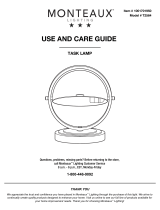 Monteaux Lighting T2564 Installation guide
Monteaux Lighting T2564 Installation guide
-
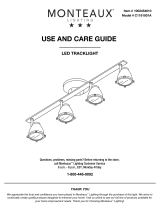 Monteaux Lighting C1191001A Operating instructions
Monteaux Lighting C1191001A Operating instructions
-
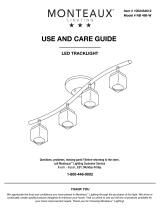 Monteaux Lighting NB 498-W Installation guide
Monteaux Lighting NB 498-W Installation guide
-
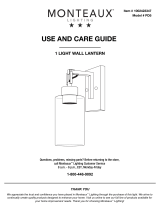 Monteaux Lighting PD5 Installation guide
Monteaux Lighting PD5 Installation guide
-
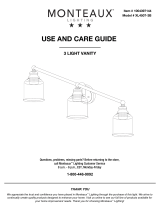 Monteaux Lighting XL4507-3B Installation guide
Monteaux Lighting XL4507-3B Installation guide
-
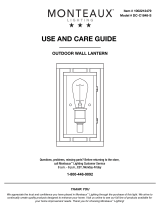 Monteaux Lighting DC-C1848-L Operating instructions
Monteaux Lighting DC-C1848-L Operating instructions

























